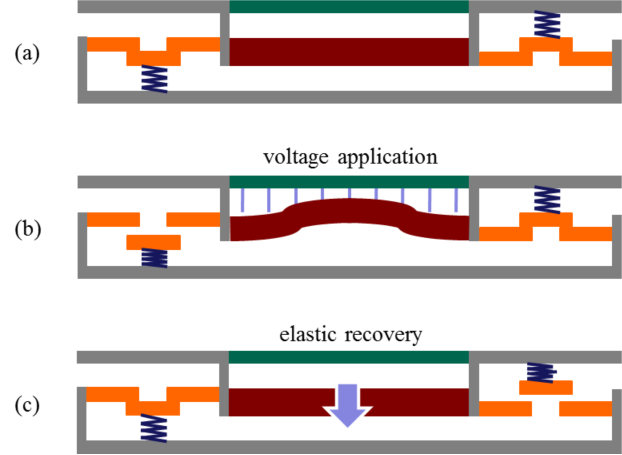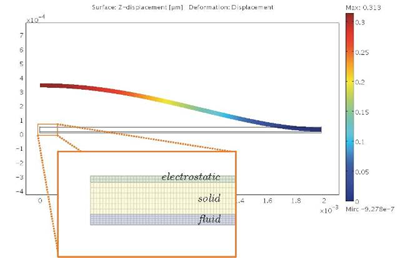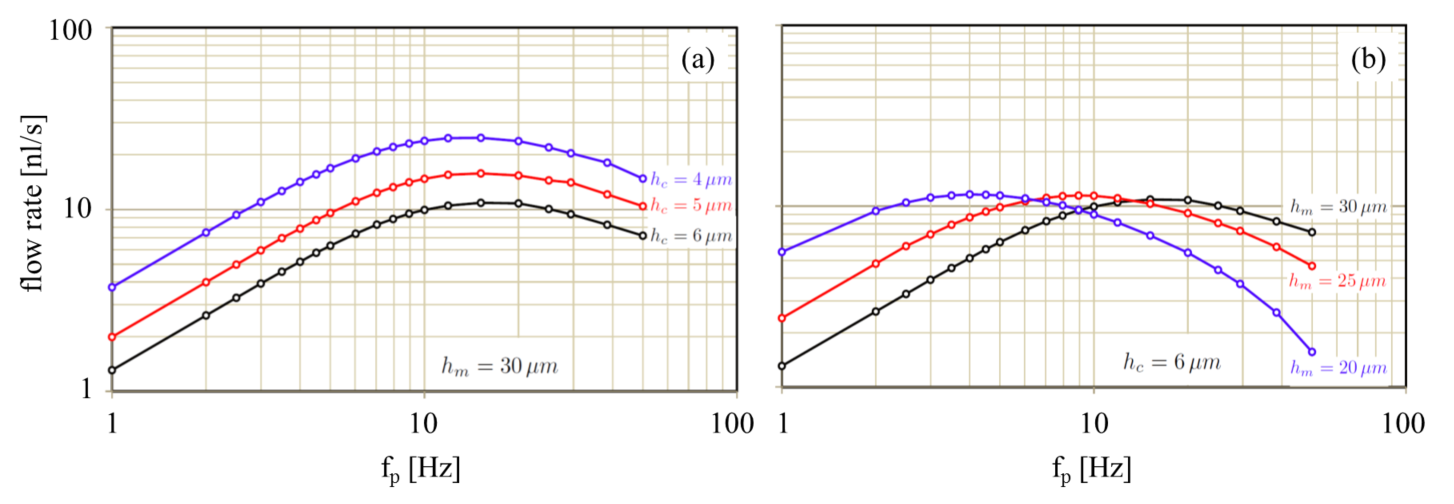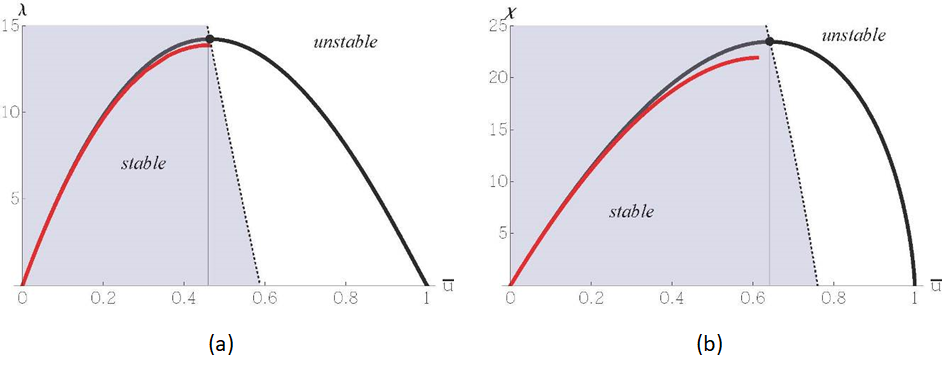Modelling and simulation of micro-pumps for drug delivery
The micro-pump we show here is a micro-device of our conception able to suck into and flush out a fluid in a micro-cavity. Its working principle is shown in the figure below.

Device functioning over a pumping cycle: (a) rest position, (b) active ?lling phase and (c) ?uid discharge. Valve action is schematically represented.
The deflection of the membrane under the applied voltage coupled with the fluid has been accurately calculated.

Screenshot of a Finite Element 2D axisymmetric model of diaphragm action.
Henceforth, the flow rate trough the the valves can be evaluated with respect to the other design parameters.

Flowrate calculated by means of a dynamic fully-coupled electro-?uid-mechanical model. The effect of capacitor spacing hc (a) and membrane thickness hm (b) is emphasized. [Bertarelli et al., Proc Coupled Problems 2011]
It is also important to forecast the pull-in behaviour; the problem is addressed both through semi-analytical formulas and numerical simulations.

Equilibrium curves and stability ranges for the micropump plate actuator, in voltage (a) and charge (b) control, obtained by applying semianalitical methods (black) and fully-coupled finite element simulations (red). [Bertarelli et al., Proc EuroSimE 2011]
